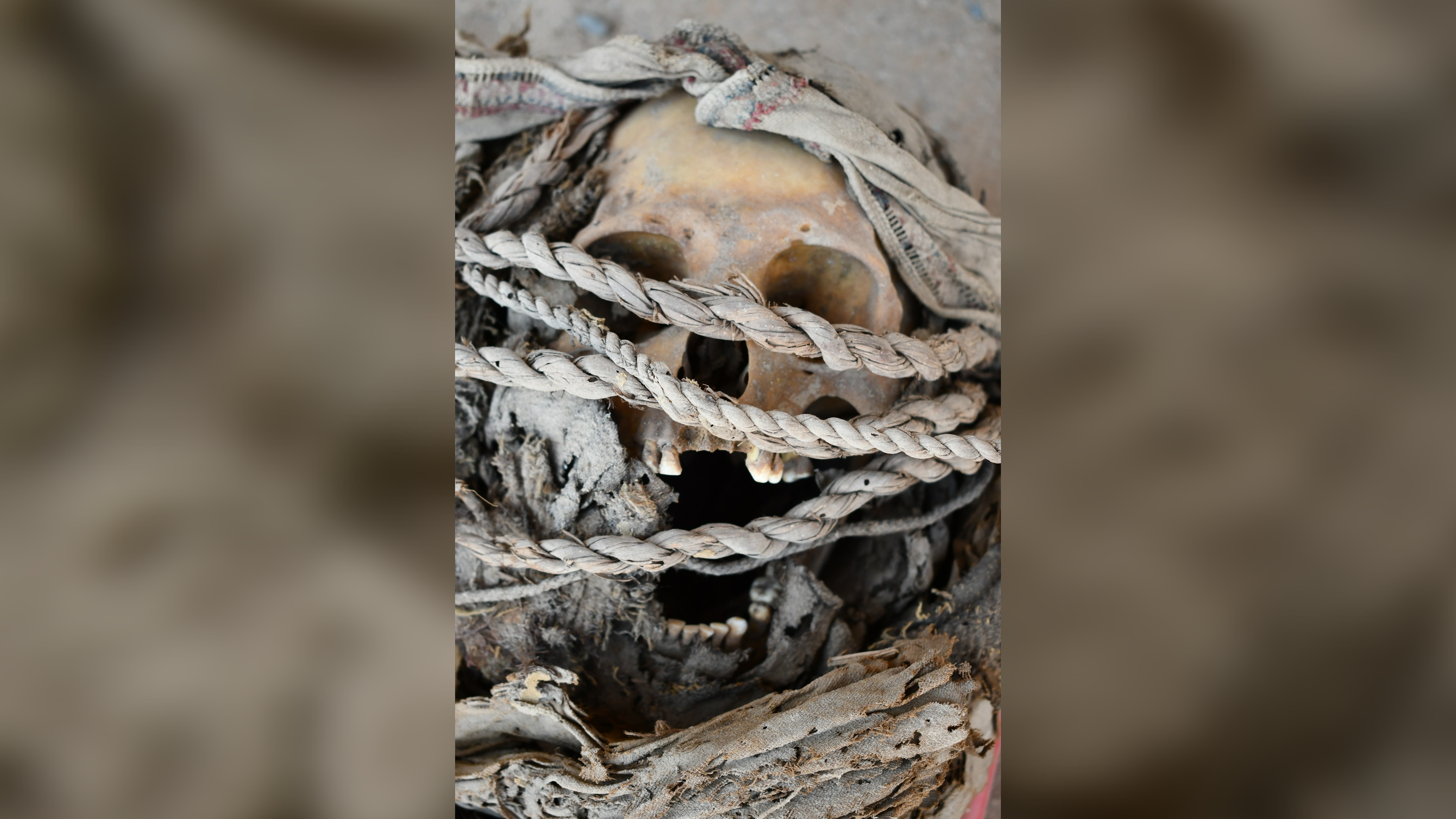
Kristina Killgrove
Kristina Killgrove is a staff writer at Live Science with a focus on archaeology and paleoanthropology news. Her articles have also appeared in venues such as Forbes, Smithsonian, and Mental Floss. Killgrove holds postgraduate degrees in anthropology and classical archaeology and was formerly a university professor and researcher. She has received awards from the Society for American Archaeology and the American Anthropological Association for her science writing.
Latest articles by Kristina Killgrove

'Ultimate adventure story': Submerged stone circles reveal perilous migration of prehistoric people to far northern Scotland 11,000 years ago
By Kristina Killgrove published
Stone tools and stone circles discovered in coastal Scotland show that prehistoric people settled farther north than anyone previously believed.

Viking DNA helps reveal when HIV-fighting gene mutation emerged: 9,000 years ago near the Black Sea
By Kristina Killgrove published
A study of more than 3,000 genomes has traced a gene mutation that confers HIV resistance to a person who lived near the Black Sea around 7000 B.C.

Hatnefer's heart scarab: An exquisite ancient Egyptian gold necklace inscribed with the Book of the Dead
By Kristina Killgrove published
A scarab beetle set in gold shows that ancient Egyptians thought the heart was the most important organ in the human body.

What does the Pope do, anyway?
By Stephanie Pappas, Kristina Killgrove last updated
New pope's schedule will be 'exhausting.'

How do archaeologists figure out the sex of a skeleton?
By Kristina Killgrove published
Archaeologists can estimate a person's sex with 95% accuracy, but many experts are focused on what can be learned about humans outside the male/female gender binary.

Ancient Maya 'blood cave' discovered in Guatemala baffles archaeologists
By Kristina Killgrove published
Archaeologists working at the Cueva de Sangre site in Guatemala have discovered an unusual ancient Maya ritual.

Metal detectorists unearth dazzling Anglo-Saxon gold-and-garnet raven head and ring: 'It's unbelievable — I'm a bit emotional'
By Kristina Killgrove published
Metal detectorists in southwest England unearthed the two gold-and-garnet objects from the Anglo-Saxon period in January.

Secret of ancient Maya blue pigment revealed from cracks and clues on a dozen bowls from Chichén Itzá
By Kristina Killgrove published
The question of how the super-blue paint was made now has a second answer.

Ancient jawbone dredged off Taiwan seafloor belongs to mysterious Denisovan, study finds
By Kristina Killgrove published
Researchers have determined that a mysterious jawbone discovered on the seafloor off the coast of Taiwan was Denisovan, proving that the archaic humans were distributed widely over Asia.

Secret 'drug room' full of psychedelic 'snuff tubes' discovered at pre-Inca site in Peru
By Kristina Killgrove published
Archaeologists have found conclusive evidence of psychedelic drug use more than 2,500 years ago in Peru.

Hårby Valkyrie: A 1,200-year-old gold Viking Age woman sporting a sword, shield and ponytail
By Kristina Killgrove published
This tiny figurine may represent a mythical warrior maiden who assisted Odin, the Norse god of war.

18th-century monk's anus was stuffed with wood chips and fabric to mummify him, researchers discover
By Kristina Killgrove published
An 18th-century Austrian monk who died of tuberculosis was mummified in an extremely unusual way.

'Overkill' injuries on Bronze Age skeletons reveal fierce feuding in ancient China
By Kristina Killgrove published
A unique Bronze Age cemetery in China has revealed a high frequency of injuries suggestive of intense, violent interactions.

Mass grave of Black Union soldiers slaughtered during the Civil War may lie under a Kentucky soybean field, high-tech scans reveal
By Kristina Killgrove published
Archaeologists have identified two potential mass graves of Black Union soldiers who were targeted by Confederate guerrillas in the Civil War.

Apulian rhyton: A 2,300-year-old Spartan-hound-shaped cup that was likely used at boozy bashes
By Kristina Killgrove published
This dog-shaped vessel was likely used for pouring wine, oil or blood in ancient rituals in what is now Italy.

Pompeii quiz: How much do you know about the Roman town destroyed by Mount Vesuvius?
By Kristina Killgrove published
Is your knowledge of Pompeii strong enough to withstand our flow of questions?

Stone Age quiz: What do you know about the Paleolithic, Mesolithic and Neolithic?
By Kristina Killgrove published
Is your knowledge of the Stone Age rock-solid?

Lviv pysanka: World's oldest Easter egg
By Kristina Killgrove published
A decorated duck egg discovered in a trash pit is the world's oldest "pysanka."

Stone Age tombs for Irish royalty aren't what they seem, new DNA analysis reveals
By Kristina Killgrove published
A reanalysis of ancient DNA shows that a major cultural change took place in Ireland after four centuries of farming.

Massive circular tomb filled with battle-scarred people unearthed in Peru
By Kristina Killgrove published
Human skeletons from a large stone tomb may help archaeologists understand a mysterious pre-Inca population in Peru.

Słupcio: A 6,000-year-old amber 'gummy bear' that may have been a Stone Age amulet
By Kristina Killgrove published
This little bear carved out of amber might have been an amulet for a Stone Age hunter.

Elite Celtic warrior had healed arrowhead injury in his pelvis, 3D bone analysis reveals
By Kristina Killgrove published
A Celtic warrior was injured in battle 2,500 years ago. Archaeologists were able to identify the weapon based on 3D scans of his skeleton.

Viking quiz: How much do you know about these seaborne raiders, traders and explorers?
By Kristina Killgrove published
See if your Viking Age trivia knowledge is in ship-shape condition with our quiz.

Extremely rare Denisovan jawbone confirms human cousins spread across Asia
By Kristina Killgrove published
Researchers have determined that a mysterious jawbone discovered on the seafloor off the coast of Taiwan was Denisovan, proving that the archaic humans were distributed widely over Asia.
Sign up for the Live Science daily newsletter now
Get the world’s most fascinating discoveries delivered straight to your inbox.

